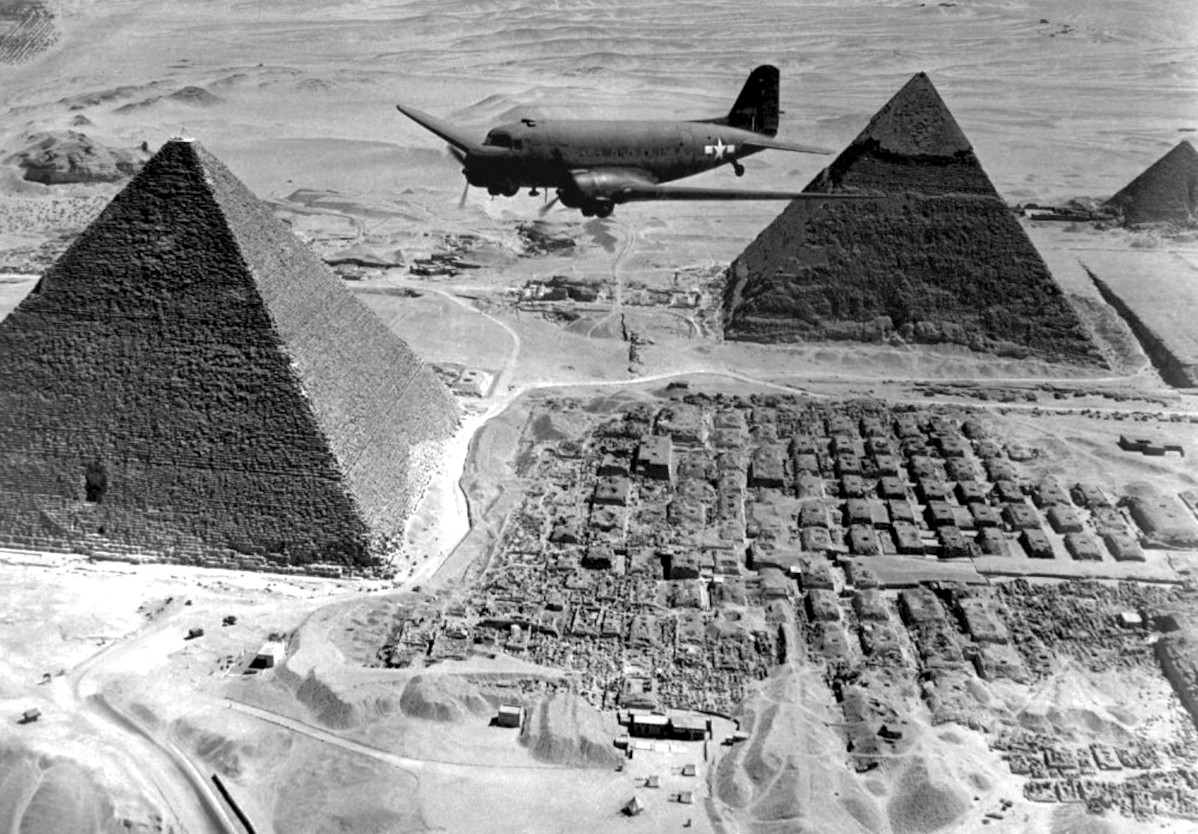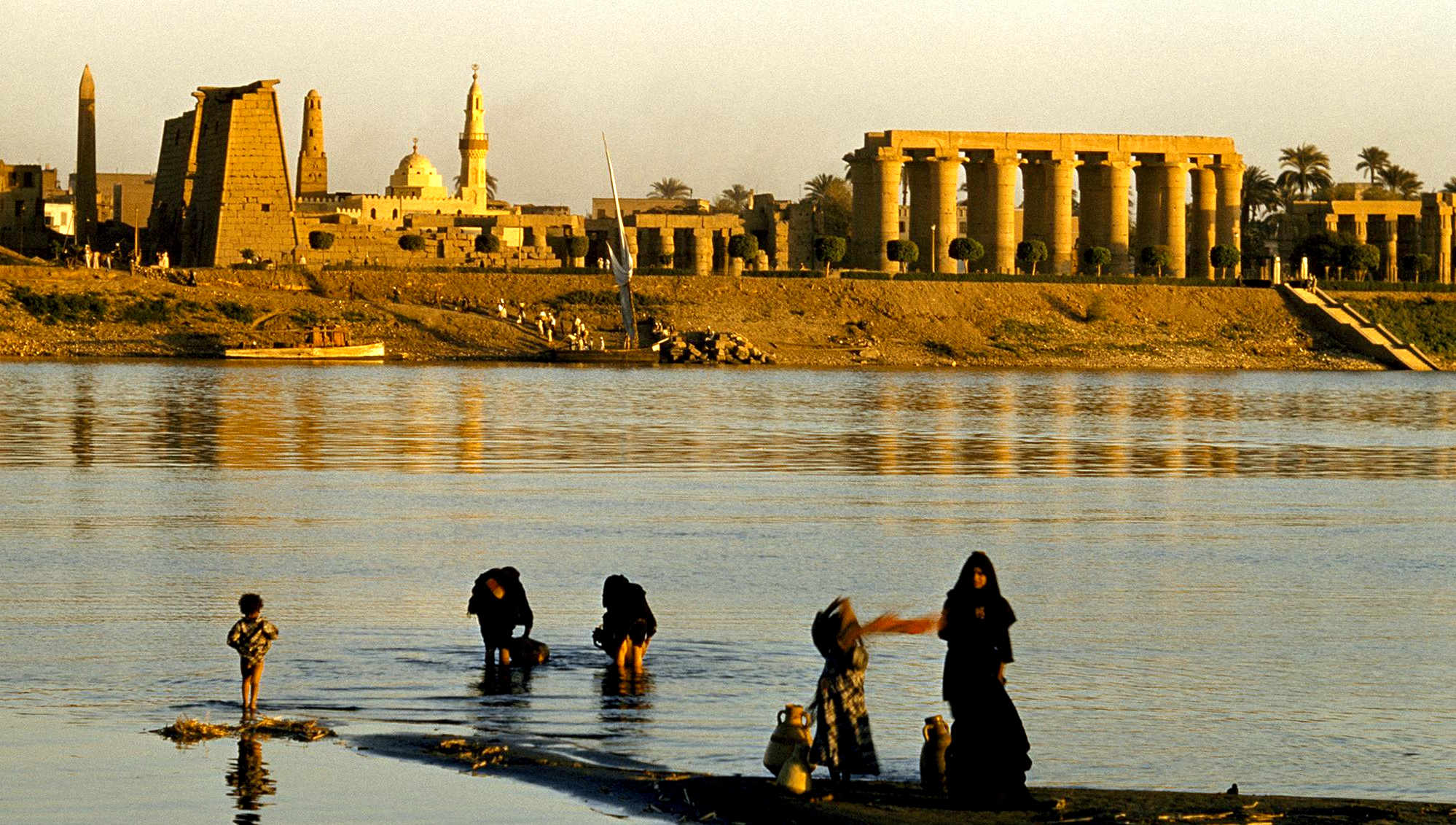
Apart
from ruling their country, the
ancient Egyptians
had time to contemplate how they would cope in the afterlife
during the flooding of the Nile, when farm laborers could be
used to build, giving them a positive agenda. Each
successive ruler of the sandy kingdom, wished for more
comforts, and to outdo their forebears, in terms of how they
would be remembered.
Egypt was one of the richest and most powerful civilizations in the world
at that time. So could afford to convert their national
output, into something tangible, for their citizens to
marvel at. At the time they had few threats (enemies) to national
security. Today, something tangible might be the tallest building in the
world, the most interesting, like the Eiffel Tower, London's
Shard, landing
on Mars, the cure for cancer, or scientifically discovering
how to bring a famous person in history, like Cleopatra,
back to life. A bit like in Jurassic
World, where dinosaurs are recreated for an amusement
complex.
What
the Ancient Egyptians achieved was a stunning indictment to
man's creative urge to build and achieve. Collectively, the
ancients left us something to wonder at. The incredible
workmanship, the engineering and the organizational
management skills that were needed to make it happen.
There
are around 90 pyramids in Egypt. In this series we are focusing
on the tallest ten.


Generally,
the bigger the pyramid, the more important the Pharaoh. It's
a Freudian thing. This compendium is in order of height.
There are many very interesting pyramid designs that will be
covered in the general indexing, if they have unusual or
developmental features. Since, the art of pyramid
construction and development appears to have been an ongoing
thing, until it fizzled out as a result of resource scarcities, adventures of thieves, and land grants
to priests, as the last straw that broke the camel’s back.
Pyramids ceased to be economically viable, and a huge drain
on what we'd call the Gross National Product (GNP) today.

On
the basis that the
taller the pyramid, the higher the status of the
king or queen,
it might be argued that Khufu takes first prize, with Khafre
a close second. After that, nobody came close to 140 meters,
as the national goal to achieve a taller building than the
last ruler fell by the wayside.
Please
note, this is not a definitive table, but our own guide,
based on freely available information. Students of
archaeology and Egyptologists will draw their own
conclusions. Observations are most welcome, if we have
misquoted anything. We'd be pleased to make corrections as
applicable.

RULER
WITHOUT A PYRAMID - Tragically, queen Cleopatra poisoned herself
with an Egyptian cobra. Later her
mausoleum was washed into the sea by an earthquake and
tsunami in 365AD. Leaving little to visibly remind us of
the great Pharaoh.
The oldest known pyramid in Egypt was built around 2630 B.C. at Saqqara, for the third dynasty’s King Djoser. Known as the Step Pyramid, it began as a traditional mastaba but grew into something much more ambitious. The pyramid’s architect was Imhotep, a priest and healer who some 1,400 years later would be deified as the patron saint of scribes and physicians. Over the course of Djoser’s nearly 20-year reign, pyramid builders assembled six stepped layers of stone (as opposed to mud-brick, like most earlier tombs) that eventually reached a height of 204 feet (62 meters); it was the tallest building of its time. The Step Pyramid was surrounded by a complex of courtyards, temples and shrines where Djoser could enjoy his afterlife.
After Djoser, the stepped pyramid became the norm for royal burials, although none of those planned by his dynastic successors were completed (probably due to their relatively short reigns). The earliest tomb constructed as a “true” (smooth-sided, not stepped) pyramid was the Red Pyramid at Dahshur, one of three burial structures built for the first king of the fourth dynasty, Sneferu (2613-2589 B.C.) It was named for the color of the limestone blocks used to construct the pyramid’s core.
OTHER
NOTABLE PYRAMIDS
54 - 72.8m (54.0m) - Neferirkare Kakai - Abusir 5th (incomplete)
52.5 - Pepi II - South Saqqara - 6th
52.5 - Merenre - - South Saqqara - 6th
52.5 - Pepi I - South Saqqara - 6th
52.5 - Teti - North Saqqara - 6th
52.5 - Djedkare Isesi - South Saqqara 5th
43m - Unas', North Saqqara 5th
Meidum Pyramid - Pharaoh Huni & Sneferu collapsed
